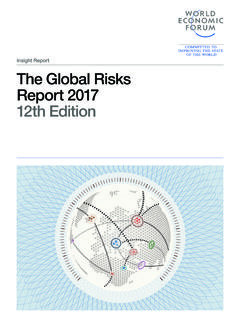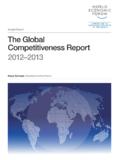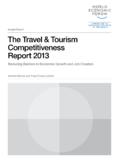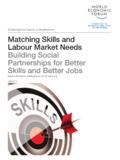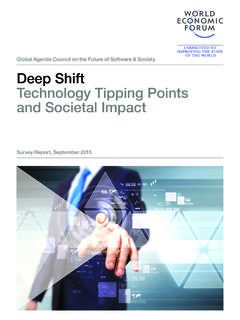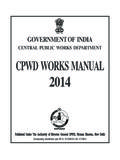Transcription of Industry Agenda Renewable Infrastructure Investment ...
1 Industry Agenda Renewable Infrastructure Investment handbook : A Guide for Institutional Investors December 2016. World Economic Forum . 2017 All rights reserved. No part of this publication may be reproduced or transmitted in any form or by any means, including photocopying and recording, or by any information storage and retrieval system. REF 040117. Contents Preface 3 Preface The World Economic Forum is pleased to present the Renewable Infrastructure Investment handbook , a guide for institutional investors interested in climate 4 Introduction finance. This handbook is part of the World Economic Forum's System Initiative on Shaping the Future of Long-Term Investing, Infrastructure and Development 5 The technology landscape and supports the Forum's decade-long effort to illustrate how investors with a long-term outlook can make meaningful change in economies and societies. 7 The market landscape The adoption of the Paris Agreement on 12 December 2015 by 195 governments is a major turning point in the global fight against climate change.
2 To date, 9 The roadmap for Renewable 190 governments have committed to specific actions to reduce their national Infrastructure greenhouse gas (GHG) emissions, covering over 95% of total global emissions. While these efforts alone will not suffice in keeping the world climate-safe, these 12 The existing experience bottom-up national pledges will provide a solid foundation from which ambition can be ratcheted up in the coming years. 14 Appendix At the same time, the Fourth Industrial Revolution has contributed to a dramatic 14 Case study 1: Caisse de reduction in technology costs, and new and attractive economics of the sector d p t et placement du provide an opportunity for investors to find stable, inflation-protected yields while Qu bec Invenergy accelerating much-needed deployment of clean energy. 14 Case study 2: Capricorn The World Economic Forum platform exists at the intersection of energy, climate Investment Group Antelope and Investment , which gives us the unique opportunity to bring all parties Valley, Solar Star Project together towards a mutually beneficial goal.
3 This handbook comes at a crucial time, when the renewables sector constitutes a compelling alternative to the low- 15 Case study 3: yielding global environment, while the world strongly needs radical change to its PensionDanmark Brigg energy matrix. Renewable Energy Plant We would like to thank the many World Economic Forum Partner companies 16 References that have contributed their expertise and leadership. In particular, we wish to express appreciation to Capricorn Investment Group, Caisse de d p t et 17 Contributors placement du Qu bec (CDPQ), PensionDanmark, GIC, CERES, and Bloomberg New Energy Finance. Richard Samans Michael Drexler Head of the Centre for the Global Agenda Head of Investors Industries Member of the Managing Board Member of the Executive Committee World Economic Forum World Economic Forum Renewable Infrastructure Investment handbook : A Guide for Institutional Investors 3. Introduction One of the most important challenges for institutional Investments in Clean Energy (USD bn).
4 Investors in the next several years is dealing with an Investments in Clean Energy (USD bn) environment of low-yielding opportunities combined with 90 the rising need to deploy large amounts of capital and 80 meet growing liabilities. At the same time, one of the most 70 important challenges for the world as a whole is dealing 60 with global warming and its proven economic impacts and 50 negative consequences for humanity. While seemingly 40 disparate, these two challenges have only recently 30 converged to a point where they become synergetic. Renewable Infrastructure has reached sufficient maturity 20 to constitute a sound Investment proposition and the best 10 chance to reverse global warming. 0 2004 2006 2008 2010 2012 2014 Two key concerns that have historically inhibited Quarterly Investments Four quarter moving average investments in Renewable Infrastructure are size and risk. 2030 requirement (COP21) First, large institutional investors look for opportunities 2030 expectaDon (current trend) to deploy meaningful amounts of capital, which has not 2020 expectaDon (current trend) Average (last 2 years) been previously possible in the incipient Industry .
5 Second, Average (last 10 years) Renewable energy has always been associated with 0 50 100 150 200 250 300 350 400 450 frontier technology risks, outside the realm of feasibility for traditional investors. Both dynamics shifted in the past five Asset Owners AUM Asset Owners AUM years. First, Renewable Infrastructure now exhibits sizeable Investment potential. Conclusions from the United Nations Only $138 billion Conference on Climate Change (COP21) in December idenD ed as 2015 highlight the need for an additional $1 trillion in annual low-carbon Renewable Infrastructure Investment by 2030 to meet the investments ( ) goal of limiting global warming to 2 degrees. This need compares to a current annual average capacity investments of around $200 billion. Furthermore, among the top Source: Bloomberg New Energy Finance; CERES, Asset Owners Disclosure Project Source: Bloomberg New Energy Finance; CERES, Asset Owners Disclosure 500 asset owners, including foundations, pensions and Project endowments, only of total assets under management (AUM) have been identified as low-carbon investments Of course, some of the opportunities in Renewable ($138 billion versus $38 trillion AUM).
6 Energy still present other types of risk, such as political or regulatory risk, especially in direct investments in emerging Second, and most importantly, Renewable energy markets. Nonetheless, there is still a wide gap between technology, especially solar and wind, has made perception and reality about risks and opportunities in the exponential gains in efficiency in recent years, enough sector. Several risk-mitigation instruments, including political to achieve economic competitiveness and, in an risk insurance, are available from international organizations. increasing number of cases, grid parity. For instance, the unsubsidized, levellized cost of electricity (LCOE) for utility- This handbook aims to clarify these and other scale solar photovoltaic, which was highly uncompetitive misperceptions around an Industry that has evolved only five years ago, has declined at a 20% compounded at a very fast pace, providing a quick reference guide annual rate, making it not only viable but also more for investors to step deeper into the sector.
7 Section 1. attractive than coal in a wide range of countries. By 2020, provides an overview of the fast technological changes solar photovoltaic is projected to have a lower LCOE than that have made renewables cross the economic efficiency coal or natural gas-fired generation throughout the world. threshold. Section 2 offers the landscape of Renewable Renewable Infrastructure has moved much closer to utility- energy investments, detailing expected and realized risks like investments and no longer presents frontier technology- and returns across asset classes. Section 3 highlights the like risks. key remaining risks in the sector, showcasing respective mitigating factors. Section 4 presents real-life examples from the experience of institutional investors, both in survey format and case studies. Section 5 concludes. 4 Renewable Infrastructure Investment handbook : A Guide for Institutional Investors The Technology Landscape Even though the renewables proposition has always had World Energy Matrix environmental appeal, technology has historically been subpar in delivering appropriate returns to investors without World Energy Matrix 45 an impact mandate.
8 Inefficiencies in incipient solar and wind 40 technologies have perpetuated a global energy matrix that still features coal and natural gas accounting for 62% of 35 % of world energy total generation. Nonetheless, exponential improvements 30 Coal in Renewable technology, both in efficiency and cost, have Natural Gas 25 made Renewable energy competitive in the past few years. Oil 20 Hydroelectric On the efficiency front, it was only in the past five years, for 15 Renewables instance, that commercially available solar panel efficiency 10 Nuclear jumped from about 15% to 22%, after two decades of near 5 Other stagnation. In fact, research cell efficiencies now reach 0 up to 46%, according to the National Renewable Energy 1990 2000 2006 2007 2008 2009 2010 2011 2012 2013 Laboratory. Capacity factors for wind turbines have also Source: World Bank improved substantially, from about 25% to 50% in the past Source: World Bank decade, according to the (IEA). Even more importantly, advances in manufacturing reduction for every doubling in production capacity) of up to processes and economies of scale have considerably 22%, and price compression of 80% since 2009, according reduced production costs.
9 For instance, solar photovoltaic to the International Renewable Energy Agency (IRENA). system costs are mostly driven by module costs, which Wind turbine prices have fallen by more than 30% over the have recently benefited from high learning rates (price past three years. Best Research-Cells Efficiency This plot is courtesy of the National Renewable Energy Laboratory, Golden, CO. Renewable Infrastructure Investment handbook : A Guide for Institutional Investors 5. A direct consequence of these efficiency gains and These trends are relatively low-risk, with most necessary diminishing costs has been a dramatic fall in the LCOE technologies already in development, and economies of across Renewable technologies, especially solar, in the past scale continuing to be a self-reinforcing process. The fast few years. While the average global LCOE for coal has adoption pace encourages supply expansion, which further hovered around $100/MWh for over a decade, solar has reduces production costs and stimulates demand.)
10 Seen its cost plummet from around $600 a decade ago to $300 only five years later, and now close to or below $100. for utility-scale photovoltaic. Wind LCOE is around $50. In Levelized Cost of Energy (World Average). this sense, the two major sources of non-hydro Renewable Levelized Cost of Energy (World Average) energy have reached grid parity in a number of countries. In an increasingly larger number of countries, it has become more economical to install solar and wind capacity than coal capacity. Land-Based Wind It is estimated that more than 30 countries have already $ cents/kWh Wind-O shore reached grid parity without subsidies, and around two Solar Photovoltaic thirds of the world should reach grid parity in the next Small Hydro couple of years. If electricity costs were to rise by 3% Coal annually, 80% of the global market would reach grid parity Nuclear in the next couple of years, according to Deutsche Bank. Countries that have already reached grid parity include those in which demand is rising at a fast pace ( Chile, 0 Mexico) or insolation is high ( Brazil, Australia).
